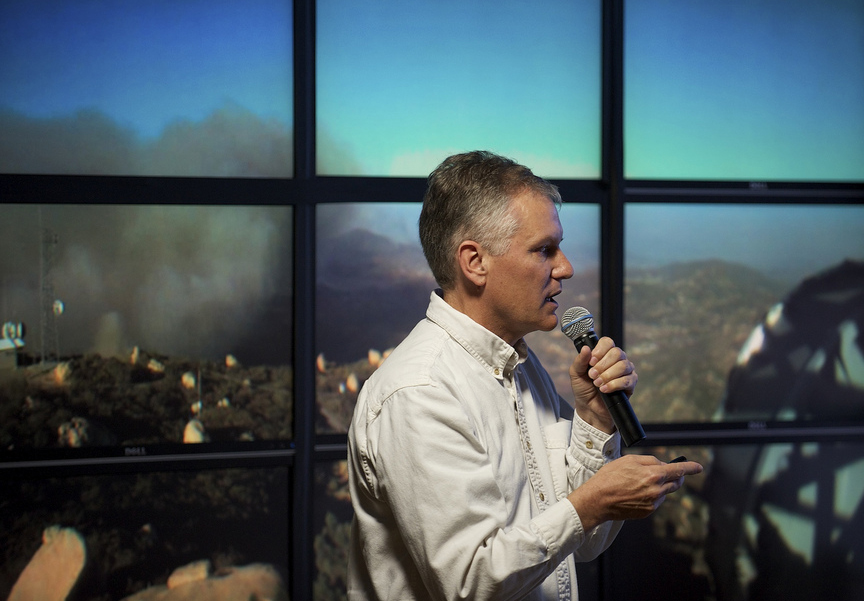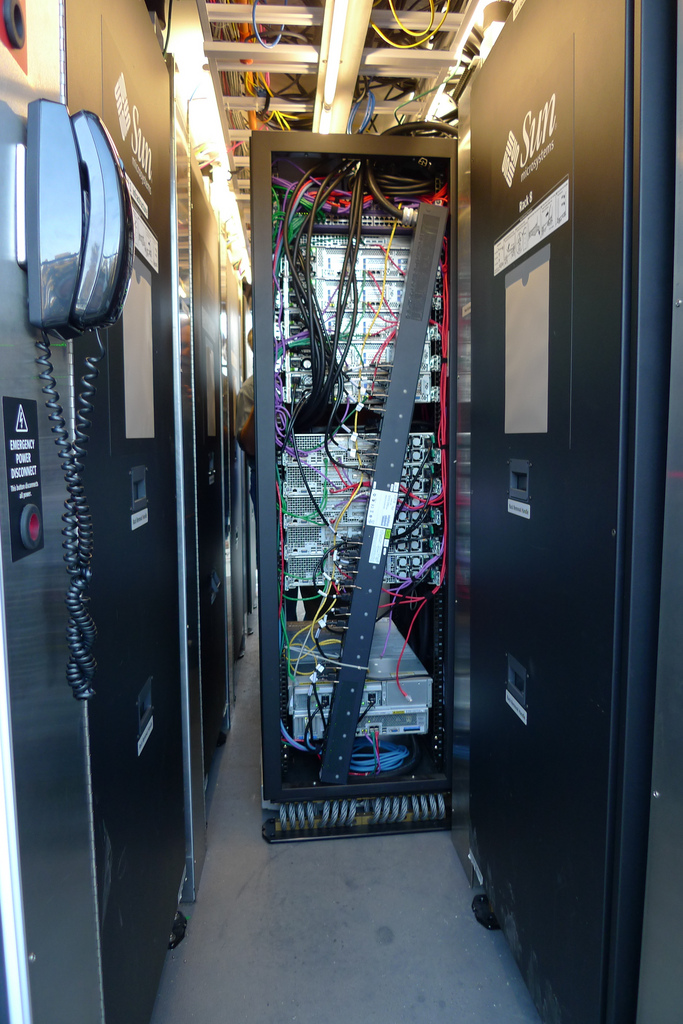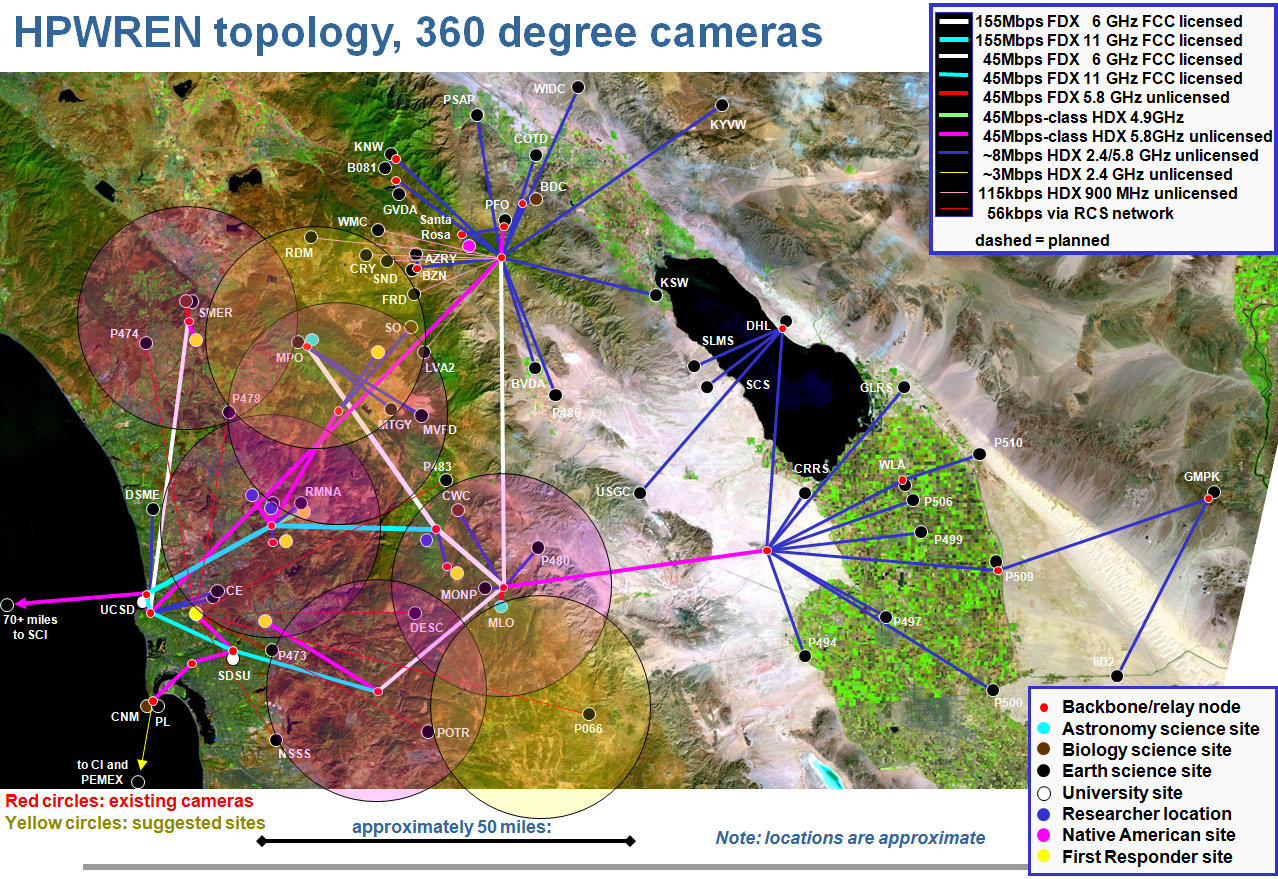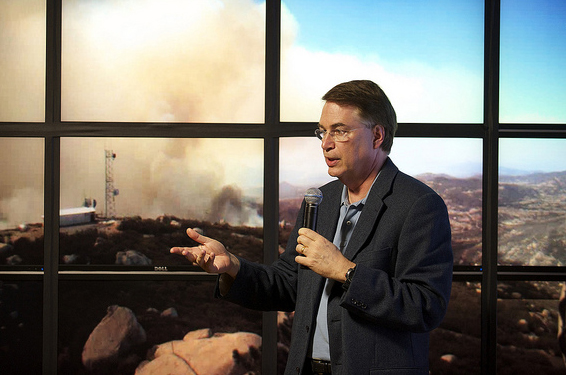Cyberinfrastructure to Meet Peak Demand for Emergency Data in Rural Areas
San Diego, March 21, 2011 -- Ahead of the next fire season in parched areas of southern California, research groups at the University of California, San Diego are building a scalable computer infrastructure to provide better access to camera feeds for rural areas when fires, earthquakes, flash floods or other natural disasters hit San Diego County.
|
The UC San Diego division of the California Institute for Telecommunications and Information Technology (Calit2) and the National Science Foundation-funded HPWREN are partnering on the new project.
“Calit2 is enriching situational awareness in rural San Diego not just for those who live there, as well as their friends and family elsewhere, but also for emergency responders who need to know the situation on the ground before they arrive on the scene,” said Calit2 director Larry Smarr. “HPWREN is a tremendous asset, and with Calit2 providing a more scalable data server architecture and backend with additional hardware, the network can serve the needs of many more people and agencies – not just during wildfires, but in other emergencies as well.”
|
Braun compares that with what happened during the 2007 Harris Fire. “We ended up at the peak with roughly 50,000 visitors in a single day, and they downloaded more than 70 gigabytes of data from a single server,” he said. “Keep in mind that every page visit may return 30, 40 or 50 items, or ‘hits’, so those peak loads can overwhelm a server. We know that a lot of people were unable to get through on their first try, so they had to keep trying if it was critical to know how far the flames had spread, and to know whether their homes were in the line of fire. It’s very hard to optimize for a system that can jump up to 50 times normal daily users for brief periods of time – and you don’t know which day the disaster will strike."
|
Calit2 proposed to HPWREN’s Braun that the institute dedicate server hardware from its NSF-funded GreenLight project to handle the peak loading. The project would also help the GreenLight project by providing another application type that can be tracked for its energy usage. Noted GreenLight principal investigator Tom DeFanti: “We were able to spend significant GreenLight funds for this because of the opportunity for energy monitoring of at-scale, broad-interest services.”
The solution devised by Calit2 engineers, including Greg Hidley, Brian Dunne, Joe Keefe and Chris Misleh, is fully scalable, and robust enough to handle any foreseeable response to wildfires or other visible hazards. “The HPWREN and GreenLight teams developed a strategy to improve access to HPWREN camera data,” said Hidley, chief engineer on the GreenLight project. “Our team put together an infrastructure upgrade implementation plan for this strategy designed to improve performance, control and reliability of HPWREN data access as well as provide improved infrastructure reliability and data redundancy.”
The hardware provided and set up by Calit2 includes multiple Sun SunFire 4540 high-performance storage servers (Thumpers), multiple 10 Gigabits-per-second network paths to Calit2 HPWREN data, as well as an A10 Load Balancer, with RAM Cache, compression offloads, TCP optimizations and simultaneous connectivity to multiple resource servers.
|
For now, HPWREN will continue to host content on its original server, while the scalable server complex at Calit2 hosts a mirror site.
Calit2 copies HPWREN content from HPWREN cameras via iRODS, a second-generation data grid system, to a Calit Sun Thumper, which then replicates it on three other Thumpers (two in Calit2’s server room in Atkinson Hall, and one in GreenLight’s SunMD modular datacenter adjacent to the School of Pharmacy and Pharmaceutical Sciences).
All the Thumpers are running on the NSF-funded, Calit2-led OptIPuter ultra-broadband network linking major research buildings on the UCSD campus. Web servers have been setup on the Thumpers and the A10 load balancer was installed to distribute web requests across multiple servers. “In addition to pulling content from multiple servers, increasing speed and availability,” explained Hidley, “the load balancer can optimize TCP traffic as well as provide caching and data-compression offloading to improve performance. The load balancer can also prioritize user requests via IP addresses, giving access priority and predictable response to emergency responders.”
|
“It’s not just creating redundancy in the system or playing the role of backup, although that is part of it in the short run,” said Braun. “Scalable servers are much better able to distribute the content, so over time the scalable system will eventually become the main site.”
The launch announced today is a beta deployment of the system, but consumers can already visit the site and download data from the Calit2 servers. The engineers still want to put the system through its paces while mimicking the load factors to be expected in a large-scale disaster scenario. “We are finalizing the stress testing on a portion of the back end,” said Calit2’s Joe Keefe. “We are currently in a staging phase, and we should be able to fully test a complete load balancing structure very soon.”
“We expect significant improvement in performance, especially during large-scale events,” said Braun. “Eventually we look forward to integrating more environmental sensors, not just cameras, into the network. We could integrate various other kinds of environmental data to present a collated view of complex situations. Examples are water and air quality, meteorological data, and seismic data. Many such sensors are already in operation on HPWREN.”
Media Contacts
Doug Ramsey, 858-822-5825, dramsey@ucsd.edu
Related Links
HPWREN
HPWREN Calit2 Camera Feeds
Applied Network Research
Calit2
SDSC
NSF Harris Fire Article
A10 AX2500
HPWREN Harris Fire Videos
FireSight
Related Articles
Digital Cinema Project Honored for Innovation in Networking






